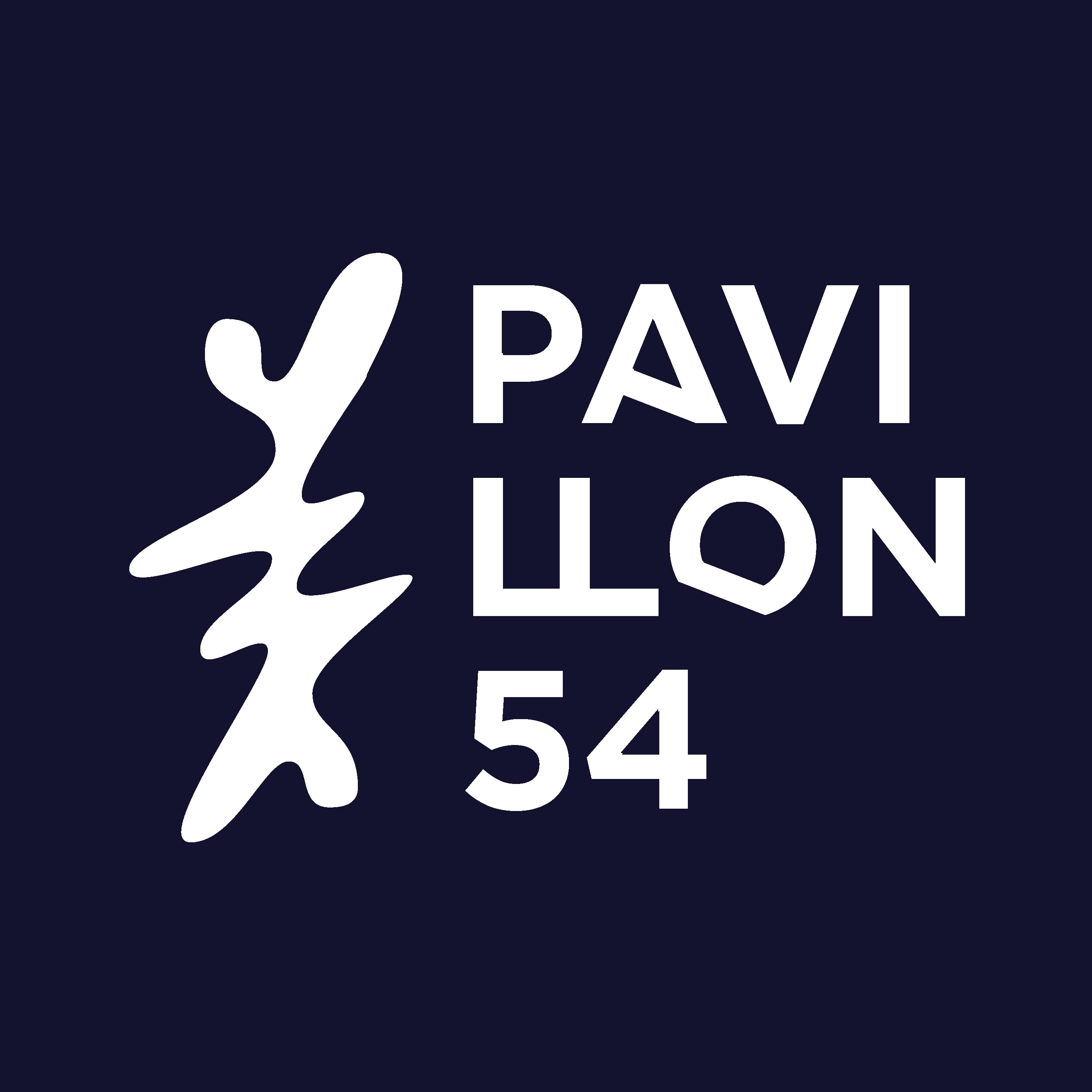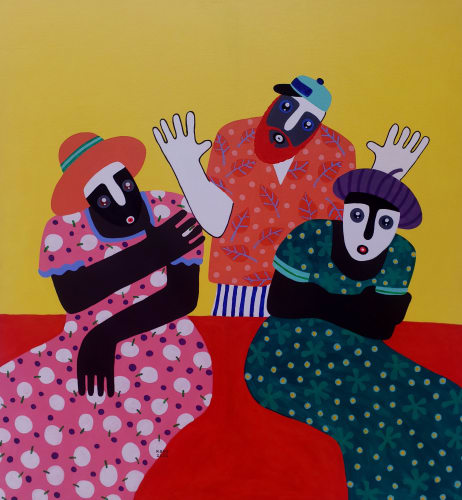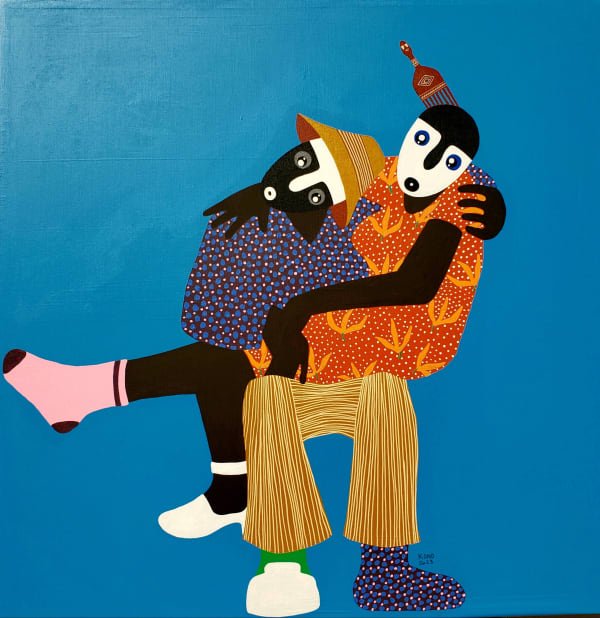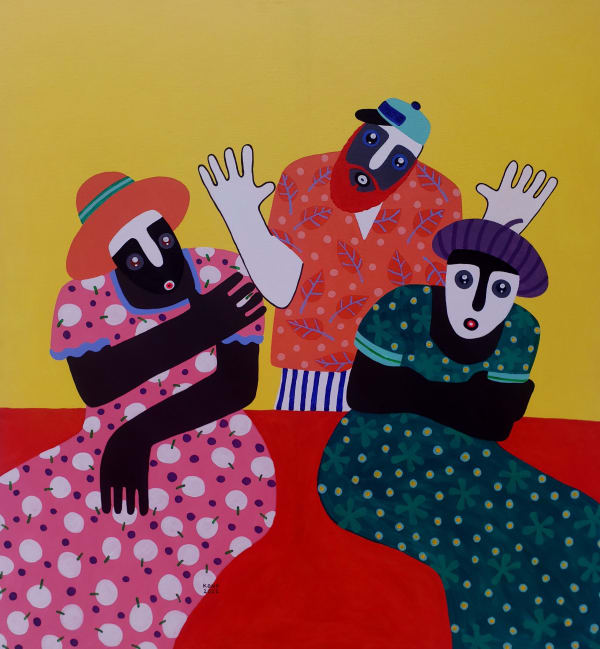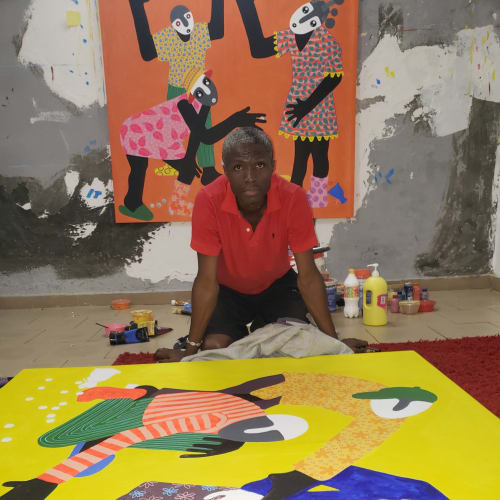Attiré par la Figuration libre et l'Art naïf, ses œuvres sont aux antipodes des attentes du public à travers ses personnages mi-enfants, mi-adultes aux têtes tournées.
C'est une façon pour lui de s'échapper de la vie tout en se moquant de son expérience. "Je préfère mourir de rire que d'ennui" est la citation qui inspire sa démarche artistique.
-
 Kono Raymond YvesLe couple, 2023Acylic on canvas59 x 59 in
Kono Raymond YvesLe couple, 2023Acylic on canvas59 x 59 in
150 x 150 cmKono Raymond Yves, Le couple, 2023$ 3,600.00 -
 Kono Raymond YvesPere et fille, 2023Acrylic on Canvas59 x 59 in
Kono Raymond YvesPere et fille, 2023Acrylic on Canvas59 x 59 in
150 x 150 cmKono Raymond Yves, Pere et fille, 2023$ 3,600.00 -
 Kono Raymond YvesGood Speaker, 2022Acylic on canvas58 1/4 x 63 in
Kono Raymond YvesGood Speaker, 2022Acylic on canvas58 1/4 x 63 in
148 x 160 cmKono Raymond Yves, Good Speaker, 2022$ 4,600.00 -
 Kono Raymond YvesGood time, 2022Acylic on canvas35 3/8 x 35 3/8 in
Kono Raymond YvesGood time, 2022Acylic on canvas35 3/8 x 35 3/8 in
90 x 90 cmKono Raymond Yves, Good time, 2022$ 3,000.00
Kono Raymond Yves, born in 1987, lives and works in Yaounde, Cameroon. He graduated in Arts Plastiques and History of Art from the University of Yaounde 1.
Kono represents the dreams of young children and adults through the human silhouette that he nicknamed ''Ntshi Ntshim'' in the ETON language. Through them, he symbolizes the idea that the Human is a being resilient who turns away from situations in order to reclaim them. The artist invites us - through the regard of his characters - to get more sense of sharing, and make his fellow man a better version of itself.
Attracted by Free Figuration and Naive Art, his works are the antipodes of public expectations through his half-child, half-adult characters with turned heads. It is a way for him to escape from life while making fun of his experience. “I would rather die of laughter than of boredom” is the quote that inspires his artistic approach. He represents linear human figures filled with color, alone and or in groups with turned faces, illustrating by this position the avoidance of the other’s gaze.
It’s a question of everyday identity, dignity, and re-appropriation of the past, present and future. It’s an affirmation of the human being.
